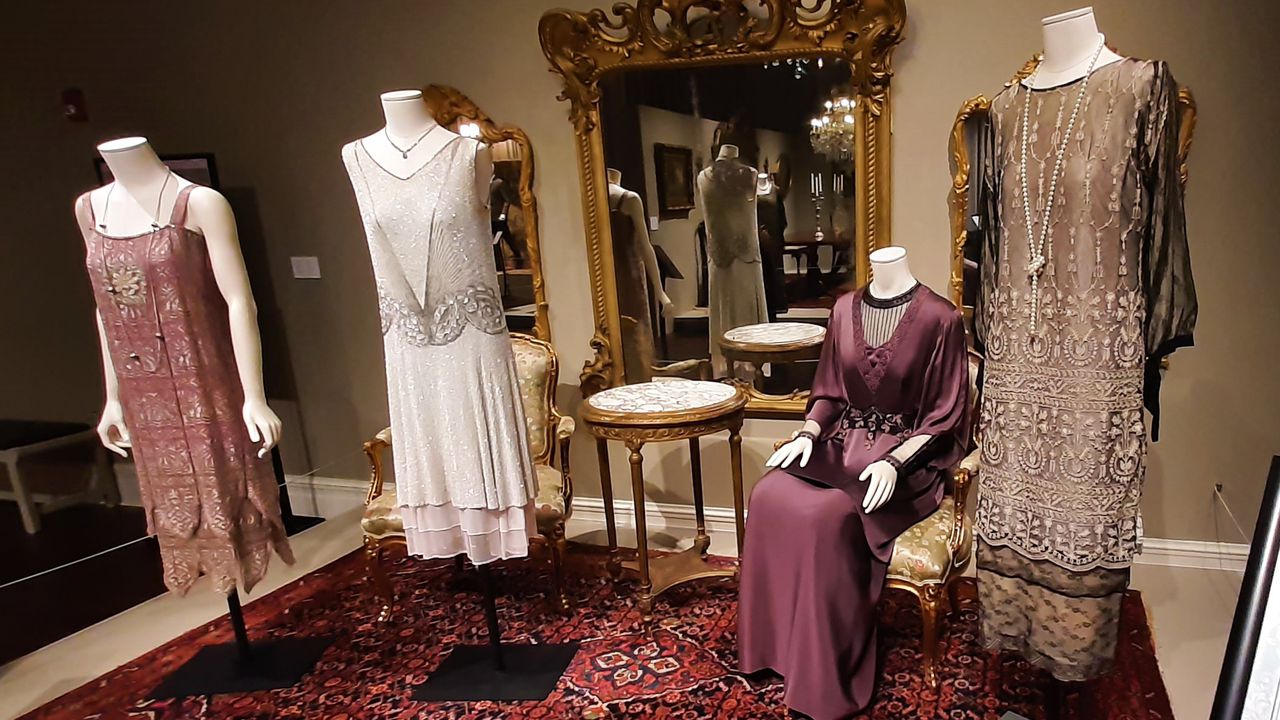‘Dressing the Abbey’ puts Downton Abbey fashions on display, and in context
Plenty of people will tell you clothes make the man, but nobody ever said they make the manor. As a new “Downton Abbey” exhibition opens at the History Museum of Mobile, it’s readily apparent that staff got the distinction.
“Dressing the Abbey” presents 35 costumes worn by actors in the period drama, which won legions of fans for its elegant depiction of life on a fictional British estate in the 1910s and ‘20s. And if the exhibition consisted of nothing but those costumes and a smattering of information, it doubtless would be of great interest to fans of the show.
You can almost hear the voice of the Dowager Countess of Grantham. And it’s probably about to say something mean.Lawrence Specker | [email protected]
But as a recent preview tour showed, Museum Director Meg McCrummen Fowler and her staff weren’t content to simply take possession of the dresses and suits and a few related items. They built the Abbey around them.
Before even getting to the heart of the exhibition, visitors may explore a room dedicated solely to the elaborate table settings and accoutrements the nobility of the “Downtown Abbey” era required to swan properly through daily life. A curling iron that rates as a piece of jewelry? A “moustache spoon,” with a built-in shield to protect one’s whiskers from the soup course? They’re here.
Having the precise implement for any occasion, and the skill to use it, was a display not just of wealth but of culture, Fowler said. Having your fried chicken served with a proper set of silver fried chicken tongs was a flex, in modern terms.
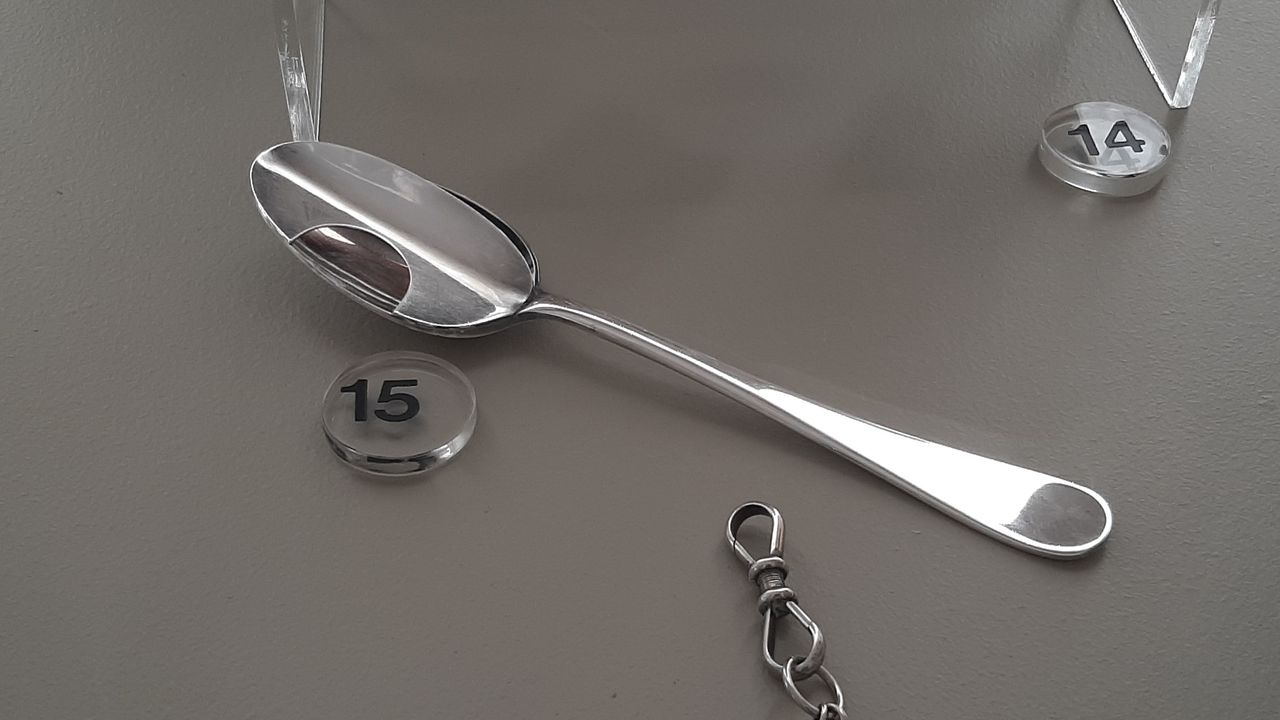
This moustache spoon is among a display of specialized dining and serving implements on display in conjunction with the “Dressing the Abbey” exhibition at the History Museum of Mobile. It has a built-in shield that protects a well-groomed moustache from the soup course.Lawrence Specker | [email protected]
“The aspic server, the raspberry fork that can only be used on raspberries,” Fowler said with a laugh. The latter was a slight exaggeration, she admitted, though there really were berry forks just for berries in general. “But a mango fork is a real thing,” she said.
And then there’s a fascinating companion exhibition of the fashions that well-off Mobilians were wearing from 1900 to 1929. Accompanying information notes that this period saw campaigns for social welfare and the advancement of municipal infrastructure, though it also was marked by entrenched segregation and racial violence.
This display draws heavily on the museum’s Hammel Collection, donated in 1980 by the family of Matilda Strouse Strauss Hammel and her husband Leopold Hammel, owner of a major department store in early 1900s Mobile. The fashions here begin with dresses in the “pouter pigeon” look and pass through the flapper style of the 1920s.
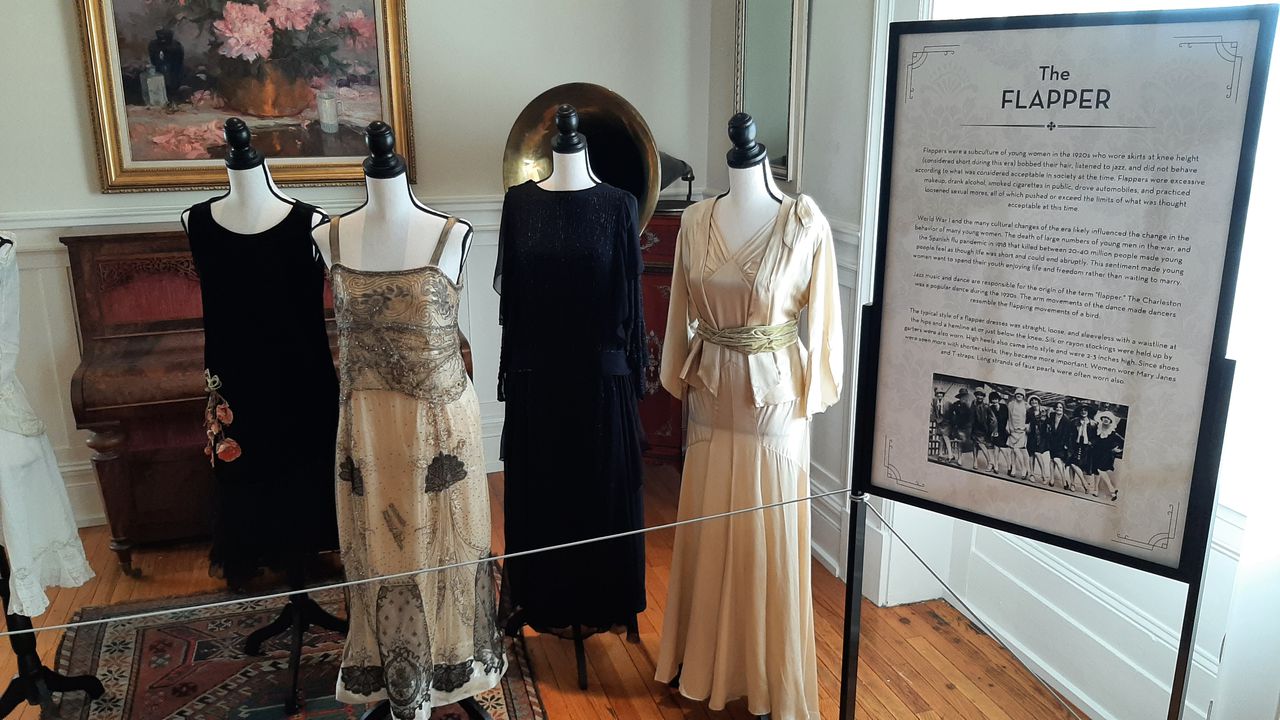
As the History Museum of Mobile displays costumes used in the production of “Downton Abbey,” a companion exhibition displays clothing worn by Mobilians in the early decades of the 20th century, including these 1920s flapper-style dresses.Lawrence Specker | [email protected]
“As you move from the first decade of the 1900s into the second decade, styles relax just a little bit, empire waistlines, women are becoming increasingly active in the community,” Fowler said. “Mobile women had always been known for their charity work, but that really picks up and becomes organized in a whole new way in the 1910s. This is often known as the Progressive Era in the United States, so lots of political and social reform movements.”
“One of the things that we really want to emphasize is that fashion, textile design, is an entry point to understand the history and culture of the period,” Fowler said. “Fashion is shaped by what’s going on in society, but it also influences what’s going on in society. And you certainly see this really distinctly in the ‘20s.”
It was an era when women gradually gained liberty of action and movement. Within limits.
“Mobile had preserved a lot of the social structure of the 19th century,” said Fowler. “Mobile didn’t really become a modern 20th century city until World War II.”
One walks into the “Downton Abbey” exhibition to find not just clothing, but clothing in context. Work dresses stand in the kitchen setting like the one their wearers would have inhabited. Formal attire worn by the likes of Dan Stevens as Matthew Crawley and Michelle Dockery as a pregnant Lady Mary Crawley is posed in a well-decorated dining room.
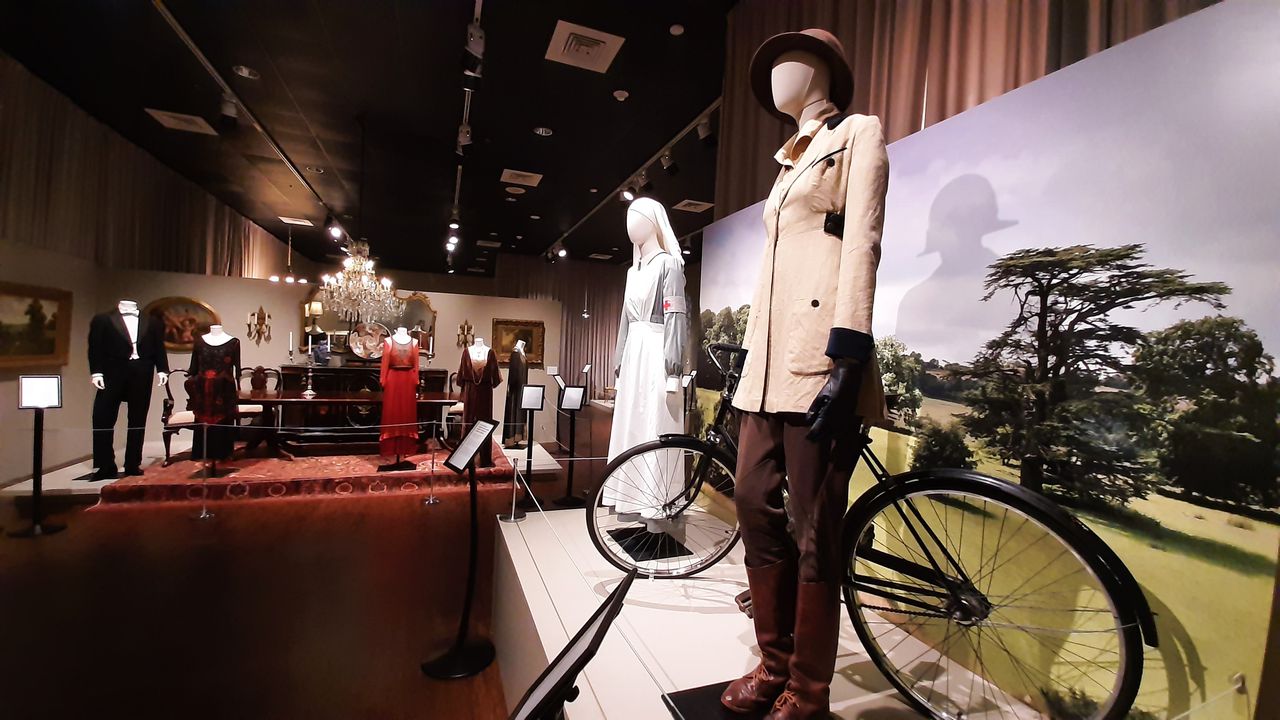
“Dressing the Abbey” displays costumes worn during the production of “Downton Abbey” and uses them to illustrate societal trends at play during the show’s era. But for fans of the show, the settings may also call to mind very specific scenes.Lawrence Specker | [email protected]
“We have built out the sets from locally sourced antiques, mostly from Old Mobile Antiques” and the museum’s own collections, Fowler said. “We’ve been working in the gallery for over seven months.”
Some of these sets doubtless will call to mind specific scenes, such as Lady Rose’s presentation at Buckingham Palace. Looking at dresses worn by the Dowager Countess of Grantham, one almost expects to hear her weigh in with her customary sharpness. The dresses alone wouldn’t have done it. It’s the presentation that makes it happen.
“The exhibit is using this wardrobe to show the impact of World War I and how the world changed in the 1920s,” said Fowler. “What 1920s England really looked like.”
As with the Mobile fashions, the Downtown Abbey fashions depict an era of change for women, when a confluence of factors – including the demands of war – led to freer, more functional, less restrictive clothing. As when Lady Edith put on a trouser suit to help on the farm, or Lady Sybil donned a nurse’s uniform. Late-period exhibits show the rise of the Arts & Crafts movement “as a reaction to industrialization.”
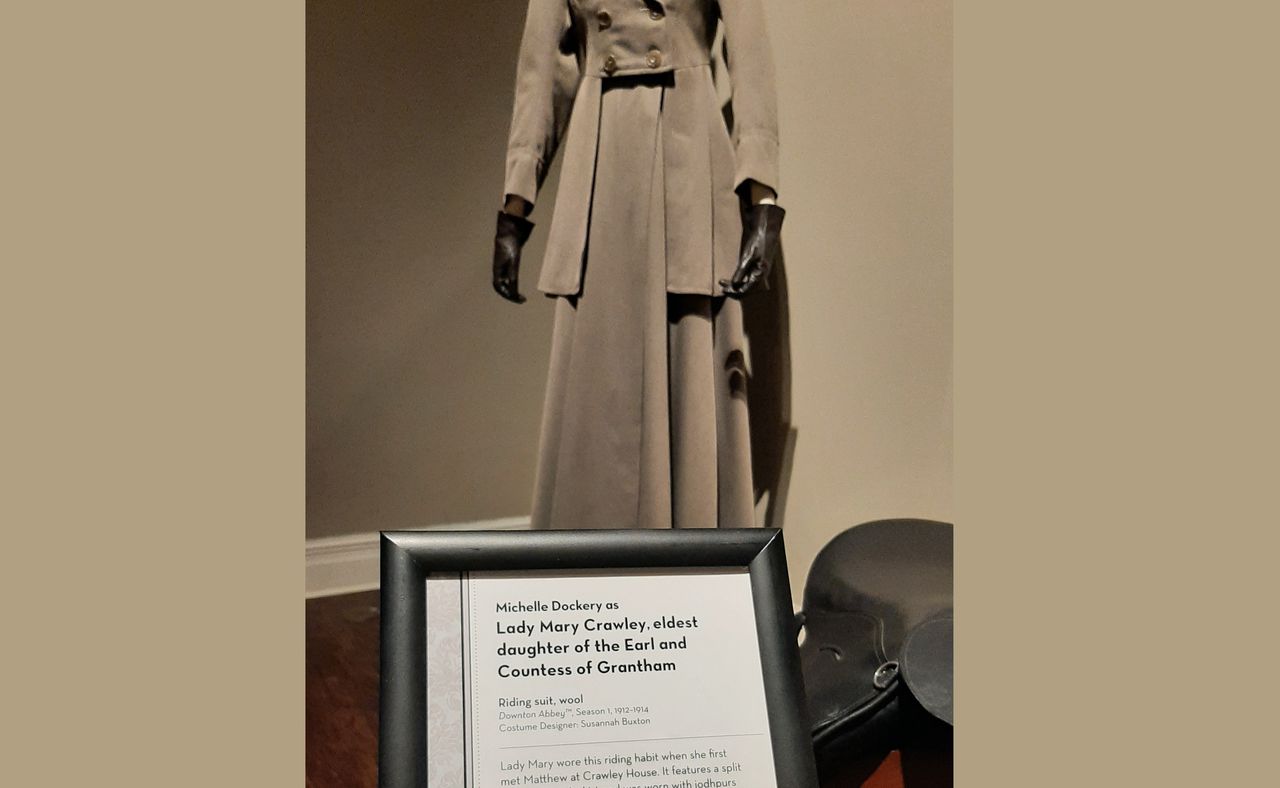
“Dressing the Abbey” displays costumes worn during the production of “Downton Abbey” and uses them to illustrate societal trends at play during the show’s era. But for fans of the show, the settings may also call to mind very specific scenes.Lawrence Specker | [email protected]
It’s a lot to take in, but it will be on display for a while: “Dressing the Abbey” opens to the public on Saturday, Jan. 28 and continues through April 22. Admission tickets are not sold in advance. They are $14 for adults, $10.50 for children ages 12-18 and $8 for children ages 6-12. $12 admission is available to seniors, active and retired military personnel and students over 18. Admission is free on the first Sunday of each month. Group rates are available.
A series of separately ticketed special events related to the exhibition will take place at the museum and other sites. Full details can be found at www.historymuseumofmobile.com. They include:
- “Scottish Spirits & Smokes,” an evening of cigars and cocktails from “The Official Downton Abbey Cocktail Book,” Jan 28, $50 per person.
- Jazz brunch reception and ballroom dancing class, Feb. 5, $50 per person for the brunch, $15 per person for the class. Guests encouraged to wear 1920s fashions.
- 1920s Cocktail Class featuring master mixologist Tyler Sayers, March 8, $100 per person.
- High Teas, March 12 and March 26, $200 per table of four.
- Easter Floral Design Class with florist Glen Jenkins of The Shade Tree, April 6, $75 per person.
